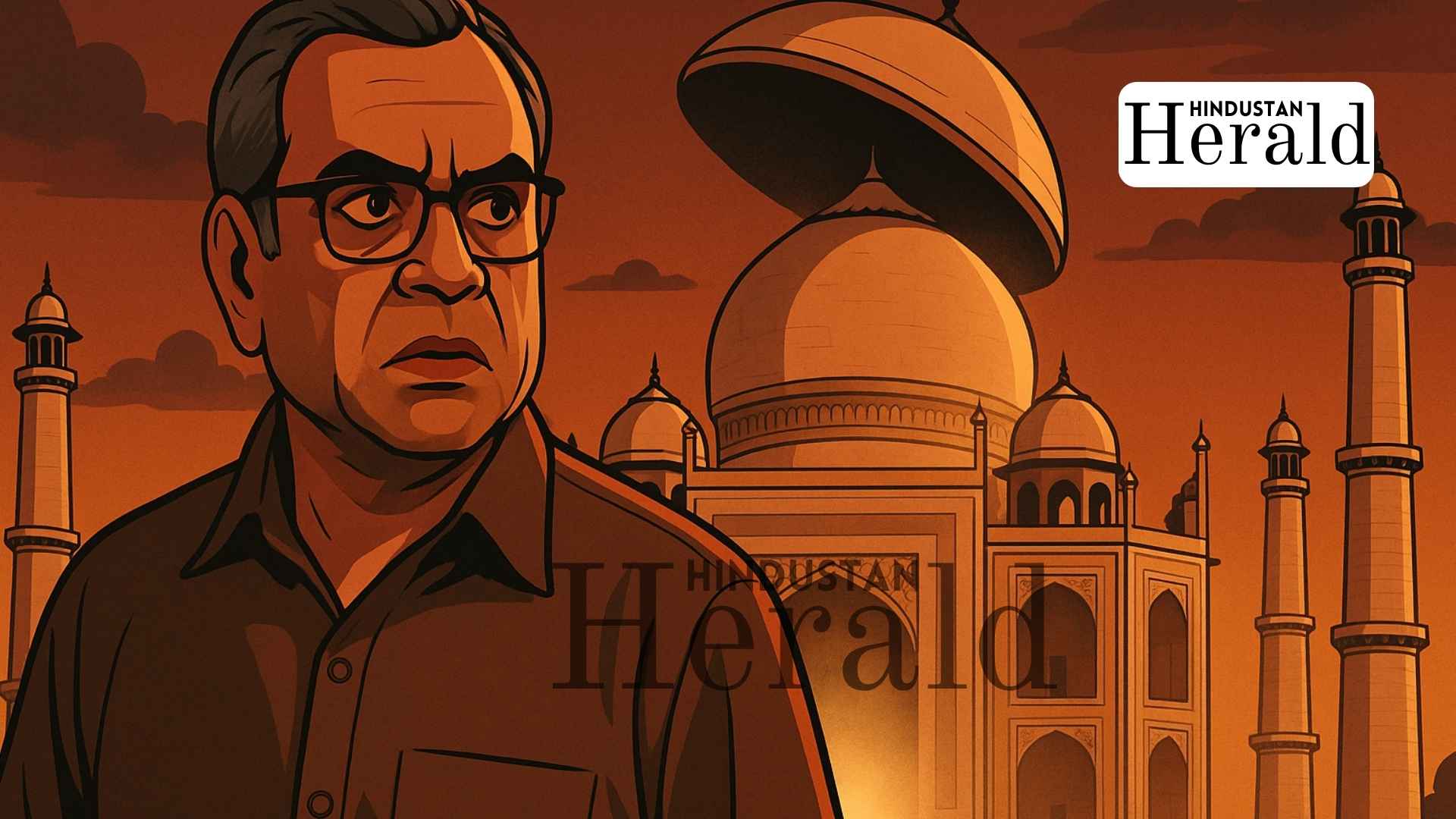New Delhi, October 29: The storm around Paresh Rawal’s new film “The Taj Story” began before a single ticket was sold. A PIL in the Delhi High Court has accused the movie of twisting history and fanning communal tension a familiar charge in today’s Bollywood, where every historical tale risks becoming a political fire.
The film, set for release on October 31, is also facing heat from an unexpected corner: a BJP leader in Ayodhya, who says the story was lifted from his own court petition. Between the two complaints, what was meant to be a period drama has turned into a courtroom drama instead.
A Scene Too Far
It started with the teaser. In it, the Taj Mahal’s dome lifts like a lid, and inside stands a Shivling. It lasts barely a few seconds, but that image has been enough to set off a fight about faith, history, and the line between both.
Advocate Mamta Rani, who filed the PIL, says the film isn’t just fiction it’s “falsehood dressed as fact.” Her plea names Paresh Rawal, the producers, and the CBFC, arguing that the visuals alone can “inflame communities.” She wants the High Court to block the release or at least force the makers to say it’s purely fictional.
According to Bar & Bench, the case hasn’t reached the hearing stage yet, but the timing is tight. If the court so much as asks the CBFC to review its clearance, the film’s Friday release could be over before it begins.
The Ayodhya Connection
Then there’s Rajneesh Singh, a local BJP leader from Ayodhya, who says the movie stole his idea. Back in 2022, Singh had gone to the Allahabad High Court asking that 22 sealed rooms inside the Taj Mahal be opened he claimed they might hide Hindu idols or inscriptions. The court dismissed it, calling the plea speculative.
Now, Singh says the film borrows from that very petition without asking him or giving credit. “They’ve taken my research and twisted it for drama,” he told NDTV. He’s written to the Information & Broadcasting Ministry and the CBFC, calling for a ban on what he describes as a “divisive and misleading project.”
When Fact Meets Fiction
The filmmakers haven’t said much. Director Sandeep Singh and actor Paresh Rawal have stayed off the record. But sources close to the team told NDTV the film is “fiction inspired by theories already in the public domain.” That phrase “theories in the public domain” does a lot of heavy lifting. It suggests creative freedom but sidesteps the question of factual grounding.
Bollywood’s been here before. Padmaavat, The Kerala Story, Adipurush, The Kashmir Files each claimed artistic licence, each faced protests, petitions, and politics. Every time, the same debate returns: where does creativity end and provocation begin?
The Legal Balancing Act
For the Delhi High Court, the question will likely fall under Section 5B(1) of the Cinematograph Act the rule that bars films that threaten public order or morality. But courts rarely block films outright. Usually, they ask the CBFC to recheck certification or add disclaimers.
Legal experts told Bar & Bench that unless the film presents conjecture as historical fact, it might survive. Still, even the process of review could delay or dent the releas, which, in Bollywood’s high-stakes world, can be punishment enough.
Politics in the Frame
Paresh Rawal’s presence adds another layer. Beyond his decades on screen, Rawal is a former BJP MP, and that makes neutrality hard to believe for some. Right-wing circles are cheering the film’s supposed “truth-telling.” Critics see it as an ideological exercise dressed up as cinema.
Inside the industry, opinion is divided but wary. One Mumbai producer summed it up bluntly: “Every big film now has a controversy budget. Some are accidental, some are marketing.”
The Monument and the Myth
What keeps returning in all this is the Taj itself the marble, the myth, the meaning. Historians have said time and again that claims of the Taj being a Shiva temple are baseless. The Archaeological Survey of India has said the same. When Rajneesh Singh made his petition in 2022, the Allahabad High Court dismissed it with a reminder: “Facts are not discovered through PILs.”
But such claims have a way of surviving logic. They feed on politics, on identity, on that need to reimagine the past. A film like this doesn’t just show a story it joins a century-long argument over who gets to tell India’s history.
What Happens Next
For now, the release is still officially on. But one court order could change that overnight. If the judges find merit in the PIL or the ministry takes up Singh’s complaint, the film could be held back or slapped with disclaimers.
Whatever happens, the controversy won’t fade quickly. This is no longer just about a film it’s about the Taj Mahal, about religion in cinema, and about the growing unease between creative freedom and collective faith.
And perhaps that’s the irony. The Taj was built to immortalize love. Today, it’s trapped in another kind of passion the politics of who owns history.
Stay ahead with Hindustan Herald — bringing you trusted news, sharp analysis, and stories that matter across Politics, Business, Technology, Sports, Entertainment, Lifestyle, and more.
Connect with us on Facebook, Instagram, X (Twitter), LinkedIn, YouTube, and join our Telegram community @hindustanherald for real-time updates.
Covers Indian politics, governance, and policy developments with over a decade of experience in political reporting.
Covers films, television, streaming, and celebrity culture with a focus on storytelling trends.











